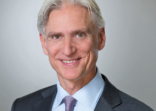The yield on German bunds recently rose above 1% from near zero-levels in mid-April and the European Central Bank recently warned about more bond market volatility.
In Asia, central banks in China, India and Korea continue to adopt a soft monetary policy while Japan is continuing with its quantitative easing policy.
In a period of such divergent monetary policies, Fund Selector Asia takes a look at two global fixed income products: Morgan Stanley Global Fixed Income Opportunities and Templeton Global Total Return.
The Luxembourg-domiciled Morgan Stanley fund, which was launched in November 2011, recently completed its three-year milestone. The fund had $1.2bn in assets under management on 31 May.
The Templeton fund is also based in Luxembourg and was launched in August 2003. Due to its longer track record, the fund is larger with $31.6bn in AUM (on 31 May).
Both funds adopt an unconstrained strategy and invest in fixed income securities globally. So what’s the difference?
Luke Ng, vice president at FE Advisory Asia provides a comparative analysis.
Investment strategy review
Both funds typically take a three-to-five year investment view and build a portfolio of 500-600 holdings, Ng said.
The Morgan Stanley fund benchmarks its performance against the Barclays Global Aggregate Index.
“The fund is managed actively and is permitted to invest into a broad range of fixed income instruments including investment and non-investment grade, sovereign and corporate, developed and emerging markets, asset-backed securities and mortgage-backed securities and convertibles.”
The Templeton fund uses the Barclays Multiverse Index as a benchmark, but the team does not adhere to it, Ng said.
“The fund is unconstrained in nature and is backed by in-house macro and country analysis. The team tends to look for high conviction ideas through yield curve, credit and currency management,” said Ng.
A key difference is in terms of asset allocation. The Morgan Stanley fund has a strong focus on the US (51.6% weighting), while the Templeton fund does not have any exposure to the US.
The Morgan Stanley team favours investment grade, high yield corporate and mortgage-backed securities over US treasuries. The rest of the positions are held in Europe including the peripheral countries.
“The Templeton team is optimistic about the prospect for improvement of the US economy and therefore sees upward pressure in the UST [US treasury yields],” Ng said.
The Templeton fund instead has a strong bias towards emerging countries, especially in Asia and Latin America due to the potential benefits of structural reform efforts in key economies. This gets reflected in its allocation to Korean securities. The top 10 holdings show five Korean securities.
Both fund portfolios have investments with an average credit quality of BBB. But the Templeton fund limits its exposure to non-investment grade bonds, Ng said.
There is also a significant difference in cash levels.
The Morgan Stanley fund has nearly fully deployed its assets, holding just 2.7% in cash. However, the Templeton fund is sitting on a cash pile of around 16%.
Both funds have been reducing the duration of their portfolio to mitigate the downside risk in a potential rising interest rate scenario, Ng said.
The Morgan Stanley fund has a duration of 2.55 years, which is higher than the 6.51 years of its benchmark index. The Templeton fund is quite different. It has a low duration of 0.27 years.
In terms of currency, nearly 98% of the Morgan fund is maintained in US dollars. The Templeton fund has maintained about 72% in US dollars and the rest is in long positions, mainly in emerging market countries.

















